Panama, officially the Republic of Panama, is situated at the southern end of Central America, bordering South America. It shares borders with Costa Rica to the west and Colombia to the southeast. The Caribbean Sea lies to its north, and the Pacific Ocean to its south. Panama City is its capital and largest urban center, housing nearly half of the nation's 4 million+ residents.
1903: Public education began
In 1903, public education began in Panama soon after it seceded from Colombia.
1903: Panama Abolishes Its Army
In 1903, shortly after gaining independence from Colombia, Panama abolished its army.
1903: Balboa Fixed to US Dollar
Since Panamanian independence in 1903, the Panamanian currency, the balboa, has been fixed at a rate of 1:1 with the United States dollar.
1904: Balboa Replaces Colombian Peso
In 1904, the balboa replaced the Colombian peso after Panama's independence.
1907: Construction of Gatun Dam Begins
In 1907, construction began on the Gatun Dam across the Río Chagres, which would eventually form Gatun Lake as part of the Panama Canal.
1913: Gatun Dam Construction Completed
In 1913, construction of the Gatun Dam across the Río Chagres was completed, forming Gatun Lake.
1913: First Panamanian Educational Assembly
In 1913, the First Panamanian Educational Assembly discussed the goals of education, initially holding a paternalistic view that education should be determined by social position.
1941: "The Seven Day Dollars" printed
In 1941, balboa banknotes were printed by President Arnulfo Arias. They were recalled several days later, giving them the name "The Seven Day Dollars".
1946: Panamanian Professional Baseball League Founded
The Panamanian Professional Baseball League was first held in 1946, though it experienced multiple interruptions over the decades.
1952: José Remón Elected President
In 1952, José Remón was declared the president of Panama in an election questioned by independent observers.
1979: Trans-Panama Pipeline Operational
In 1979, the Trans-Panama pipeline, running 131 kilometres (81 miles) across the isthmus, began operating between Charco Azul and Chiriquí Grande.
October 27, 1982: US and Panama Sign Bilateral Investment Treaty
On October 27, 1982, the Bilateral Investment Treaty (BIT) between the governments of the United States and Panama was signed.
1988: Liga Panameña de Fútbol Founded
In 1988, the Liga Panameña de Fútbol, the top tier of domestic Panamanian football, was founded.
1989: End of Noriega's Military Dictatorship
In 1989, Manuel Noriega's military dictatorship ended in Panama.
1994: Law 8 of 1994
In 2012, Panama enacted Law No. 80 to promote foreign investment in tourism. Law 80 replaced Law 8 of 1994.
1999: Transfer of Control of Canal to Panama
In 1999, the transfer of control of the Panama Canal to the Panamanian government was completed, after 85 years of US control.
2000: Panama Controls Panama Canal
By 2000, Panama controlled the Panama Canal, which connects the Atlantic Ocean and the Caribbean Sea to the north of the Pacific Ocean.
October 22, 2006: Referendum Approves Panama Canal Expansion
On October 22, 2006, a referendum overwhelmingly approved a project to build a third set of locks for the Panama Canal.
2006: Inflation Rate
According to the Economic Commission for Latin America and the Caribbean, Panama's inflation in 2006 was 2.0 percent as measured by a weighted Consumer Price Index.
2006: Real GDP growth rate
In 2006 Panama experienced a boom, with growth in real gross domestic product (GDP) averaging over 10.4 percent between 2006–2008.
July 11, 2007: Panama Approves Trade Promotion Agreement
On July 11, 2007, Panama approved a Panama–United States Trade Promotion Agreement (TPA).
August 2008: Food Surplus Registered
In August 2008, Panama registered a food surplus.
2008: Increase in European Tourism
In 2008, the number of tourists from Europe grew by 23.1 percent during the first nine months.
May 2009: Ricardo Martinelli Elected President
In May 2009, Ricardo Martinelli of the Alliance for Change was elected president of Panama, succeeding Martin Torrijos. Martinelli won by a landslide, gaining 60 percent of the vote against the Democratic Revolutionary Party's candidate's 37 percent.
2009: Port of Cristobal Handles 2,210,720 TEU
In 2009, the Ports of Cristobal handled 2,210,720 TEU, making it the second-busiest port in Latin America, after the Port of Santos, Brazil.
2010: Population age distribution
In 2010, 29 percent of Panama's population was under 15 years old, 64.5 percent was between 15 and 65, and 6.6 percent was 65 years or older.
2010: Literacy Rate
In 2010, Panama's literacy rate was estimated at 94.1 percent.
2010: Panama population by race
In 2010, the racial makeup of Panama was 65 percent Mestizo, 12.3 percent Indigenous, 9.2 percent Black or African descent, 6.8 percent Mulatto, and 6.7 percent White.
2010: Panama's Economy Predicted to be Fastest Growing
The Latin Business Chronicle predicted that Panama would be the fastest growing economy in Latin America during the five-year period from 2010 to 2014.
October 21, 2011: US President Approves Trade Promotion Agreement
On October 21, 2011, US President Obama approved the Panama–United States Trade Promotion Agreement (TPA).
October 31, 2012: Trade Promotion Agreement Enters Into Force
On October 31, 2012, the Panama–United States Trade Promotion Agreement (TPA) entered into force.
2012: Unemployment Rate
As of 2012, Panama had an unemployment rate of 2.7 percent, according to the CIA World Factbook.
2012: Tourism Revenue
In 2012, 4.585 billion US dollars entered into the Panamanian economy as a result of tourism. The number of tourists who arrived that year was 2.2 million.
2012: Law No. 80 Enacted
In 2012, Panama enacted Law No. 80 to promote foreign investment in tourism. Law 80 replaced an older Law 8 of 1994.
May 4, 2014: Juan Carlos Varela Wins Presidential Election
On May 4, 2014, Juan Carlos Varela of the Partido Panamenista won the presidential election with over 39 percent of the votes, defeating José Domingo Arias of Cambio Democrático.
July 1, 2014: Juan Carlos Varela Sworn In
On July 1, 2014, Juan Carlos Varela was sworn in as the President of Panama.
2014: Panama's Economy Predicted to be Fastest Growing
The Latin Business Chronicle predicted that Panama would be the fastest growing economy in Latin America during the five-year period from 2010 to 2014.
2015: Poverty Rate
In 2015 poverty at less than US$5.5 a day was 15.4 percent.
2015: Panama's Human Development Index Rank
In 2015, Panama ranked 60th on the Human Development Index.
2015: Religion in Panama
In 2015, a government survey estimated that 63.2% of Panama's population identified as Roman Catholic, while 25% identified as evangelical Protestant.
February 2016: Panama Removed from FATF Gray List
In February 2016, Panama was removed from the FATF gray list, indicating progress in anti-money laundering compliance.
2017: Panama Signs UN Treaty on the Prohibition of Nuclear Weapons
In 2017, Panama signed the UN treaty on the Prohibition of Nuclear Weapons.
2017: Poverty Rate
In 2017, poverty at less than US$5.5 a day fell to an estimated 14.1 percent.
2018: Postponed PISA Participation
Due to debts and unsatisfactory exam results, Panama postponed participation in the PISA exams until 2018.
2018: EU Removes Panama from Tax Haven Blacklist
In 2018, the European Union removed Panama from its tax haven blacklist.
May 2019: Laurentino Cortizo wins the presidential election
In May 2019, Laurentino Cortizo was the candidate of the Democratic Revolution Party (PRD) in the presidential election.
July 1, 2019: Laurentino Cortizo Takes Office
On July 1, 2019, Laurentino Cortizo of the Democratic Revolution Party (PRD) took possession of the presidency of Panama.
2019: Forest Landscape Integrity Index
In 2019, Panama had a Forest Landscape Integrity Index mean score of 6.37/10, ranking it 78th globally out of 172 countries.
2021: Panama Population Estimate
In 2021, Panama's estimated population was 4,351,267.
April 28, 2022: Panama Approves Bill to Legalize Cryptocurrency
On April 28, 2022, Panama's lawmakers approved a bill that would legalize and regulate the use of bitcoin and other cryptocurrencies.
May 2022: Plan to develop a major and advanced biorefinery of aviation fuel
In May 2022, the government of Panama and energy companies announced their plan to develop a major and advanced biorefinery of aviation fuel in the country.
2022: Events during Cortizo's Presidency in 2022
In 2022, during the presidency of Cortizo, numerous events happened in the country, including the COVID-19 pandemic and its economic impact, and the 2022 protests.
July 14, 2023: Supreme Court Declared Cryptocurrency bill unenforceable
On July 14, 2023, the Supreme Court of Justice declared the cryptocurrency bill unenforceable.
2023: Events during Cortizo's Presidency in 2023
In 2023, during the presidency of Cortizo, numerous events happened in the country, including the 2023 protests.
2023: Women's National Team Debuts in the World Cup
In 2023, the Panama women's national team debuted in the World Cup, finishing last in Group F with three losses but Marta Cox scored Panama's first ever goal at a World Cup.
May 5, 2024: Most Recent National Elections in Panama
On May 5, 2024, Panama's most recent national elections took place.
May 2024: José Raúl Mulino Wins Presidential Election
In May 2024, José Raúl Mulino won the presidential election in Panama.
July 1, 2024: José Raúl Mulino Sworn In as President
On July 1, 2024, José Raúl Mulino, a close ally of former president Ricardo Martinelli, was sworn in as the new president of Panama.
2024: Panama an Electoral Democracy in 2024
In 2024 Panama was classified as an electoral democracy by the Regimes of the World index.
2024: Global Peace Index Ranking
In 2024, Panama was ranked as the 96th most peaceful country in the world, according to the Global Peace Index.
2024: Favorite sport in Panama
In a 2024 survey, 48% of Panamanians said baseball was their favorite sport, 30% said football (soccer), 4% boxing, chess and tennis.
Mentioned in this timeline
Colombia officially the Republic of Colombia is a country located...
Cryptocurrency is a digital currency operating on a decentralized network...
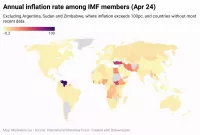
Inflation in economics signifies an increase in the average price...
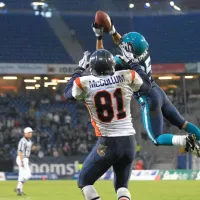
Football is a family of team sports primarily involving kicking...
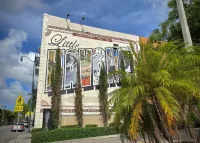
Miami is a major coastal city located in Florida United...
Jamaica is an island country located in the Caribbean south...
Trending
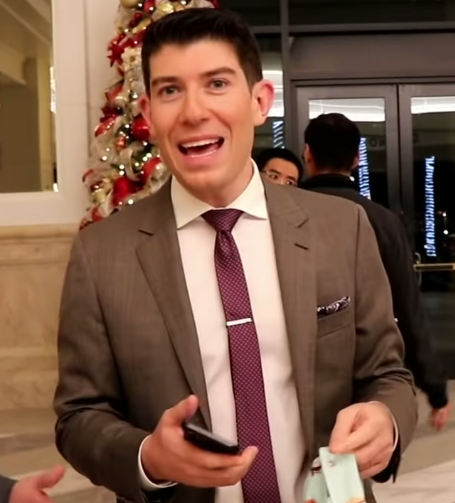
Jeff Passan is a prominent American baseball sportswriter and author He is known for his in-depth reporting analysis and commentary...

2 months ago Kyle Tucker Player Props and Chicago Cubs' Distrust in Wild Card Series

4 days ago Edwin Diaz Free Agency: Mets, Dodgers in Potential Bidding War After Williams Signing?
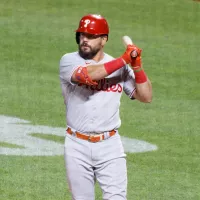
20 days ago Kyle Schwarber sparks free agency buzz: Phillies, Pirates show interest in slugger.
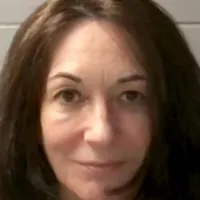
27 days ago Ghislaine Maxwell Seeks Trump Commutation; Prison Perks Investigated; Giuffre Family Reacts
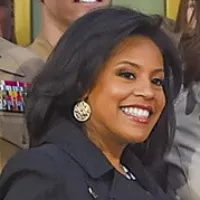
7 months ago Sheinelle Jones' Husband, Uche Ojeh, Passes Away at 45 After Cancer Battle
Popular
Matt and Ross Duffer known as the Duffer Brothers are...

Candace Owens is an American conservative political commentator and author...

Ilhan Omar is an American politician currently serving as the...

XXXTentacion born Jahseh Dwayne Ricardo Onfroy was a controversial yet...
Aftyn Alyssa Behn is an American politician currently serving as...

Tom Cotton is an American politician and Army veteran currently...